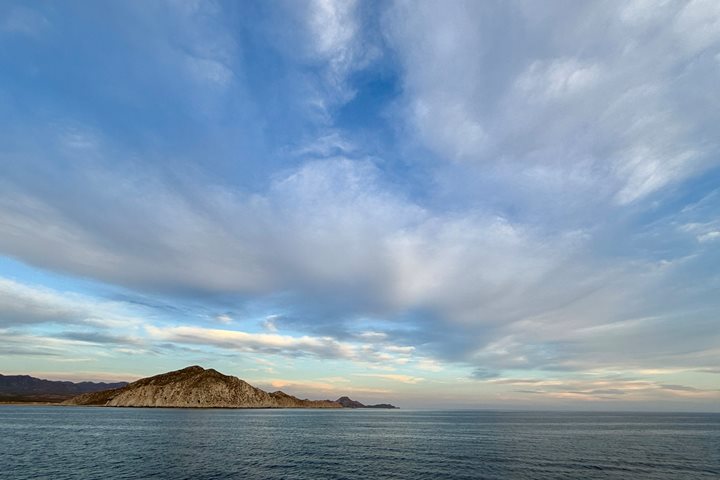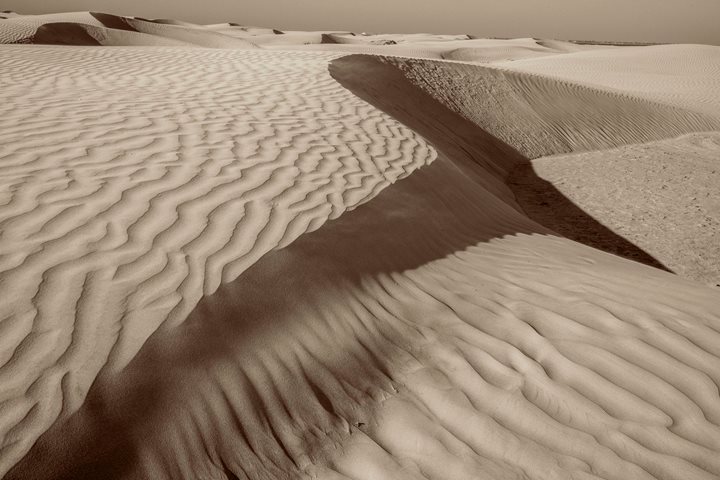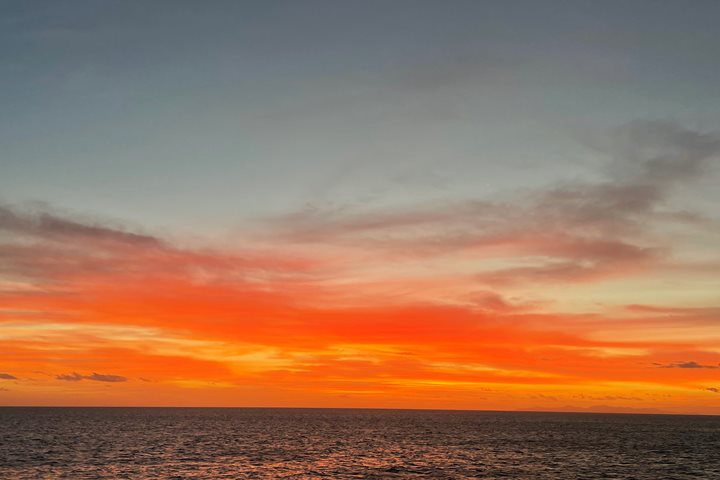The National Geographic Sea Bird left our first marine mammal sighting of our trip at approximately 9:30 p.m. on May 2nd. The sun was down, twilight colors danced across the waters as the killer whales continued their journey south, while we continued north towards our next days destination of Alert Bay on Cormorant Island. Our night passage was 96 smooth nautical miles in the protected waters of Seymour Narrows and then Johnstone Strait.
Sunrise found the Sea Bird traveling through some of the narrower sections of this well known inside passage, taking our ship through protected waters with Vancouver Island on our left and a series of islands and some of the mainland of the province of British Columbia on our right.
Just after sunrise many of us joined our natural history staff on the bow, continuing the search for marine mammals, migrating and resident birds, and a chance to watch the morning light sifting through an early morning low cloud layer.
In the late morning a presentation on Northwest Coast people, culture, and art began our preparation for our afternoon visit to the ‘Namgis clan of the Kwakwaka’wakw people of Alert Bay, British Columbia.
Just after lunch the National Geographic Sea Bird tied up at the Government dock in the center of Alert Bay on the western side of Cormorant Island. A van was provided for those who did not want to walk to the north end of town to our first stop of the afternoon; the U’mista Cultural Center. This museum was opened in 1980 and houses one of the finest collections of elaborately carved masks, depicting the Potlatch Ceremony of the Kwakwaka’wakw. This regalia was taken in a raid by the Canadian government in 1921 on Village Island, during a potlatch ceremony. The loss of this regalia was never forgotten in the community of Alert Bay. For many generations petitions were filed to the Canadian government by the people of Alert Bay, for repatriation of stolen goods. A compromise was found in requesting that the First Nations of Alert Bay build a museum to house this important collection, which was accomplished and since the early 1980’s every time another stolen piece of regalia is located extensive work begins, to bring that regalia home.
“When one’s heart is glad, he gives away gifts. It was given to us by our Creator,
to be our way of doing things, to be our way of rejoicing, we who are Indian. The
potlatch was given to us to be our way of expressing joy.” Agnes Alfred, 1980
The U’mista Cultural Center has remained one of the important First Nations museums along the Northwest Coast, drawing people like ourselves, from all over the world as visitors. We had an opportunity to watch a short film, and explore the galleries of the museum before making our way a short distance through town to Alert Bay’s gukwdzi (Big House) where our hosts, the T’sasala Cultural Group would share traditional dance, songs, and storytelling. We would not just be guests but witnesses’ to a dance performance embracing the cultural aspects of dance within the Tseka-red cedar bark ceremony and the T’lasala or peace dance ceremony.
Andrea Cranmer came forward before each dance, with an explanation of what we would be seeing and experiencing. For the next hour we watched as a variety of children of many ages entered the central area of the Big House to dance with passion, enthusiasm, and the experience taught in years of lessons with their elders. At one point one elder was so moved by the Hamat’sa dancers he came out and danced with his students! In return we stood during the Ladies dance to honor Vera Cranmer an elder and wisdom keeper who has taught her own daughters and their children for many generations. Our hosts responded to our gesture with more gifts of stories, special dances, and the exchange continued through out our visit. As the late afternoon light filtered through the smoke hole in the roof, mixed with the smoke of the fire, shafts of light danced over the interior of the Big House and its hosts and guests, creating a visual feast mixed with the sound of song and drum...we saw and experienced firsthand the strong belief amongst First Nations that children are our greatest resource, celebrated by their families, taking the culture and traditions of this small and vibrant community into the future.







